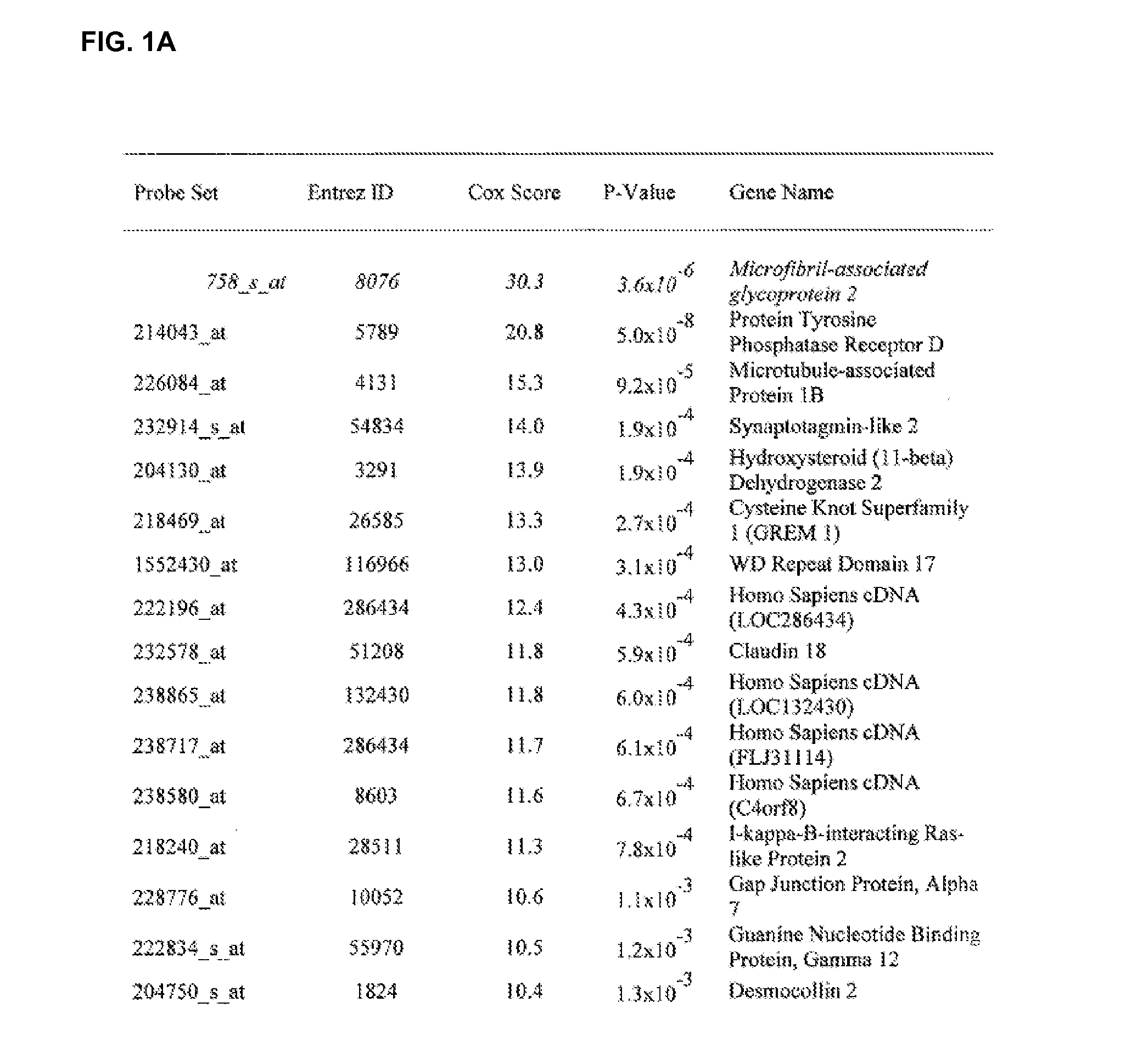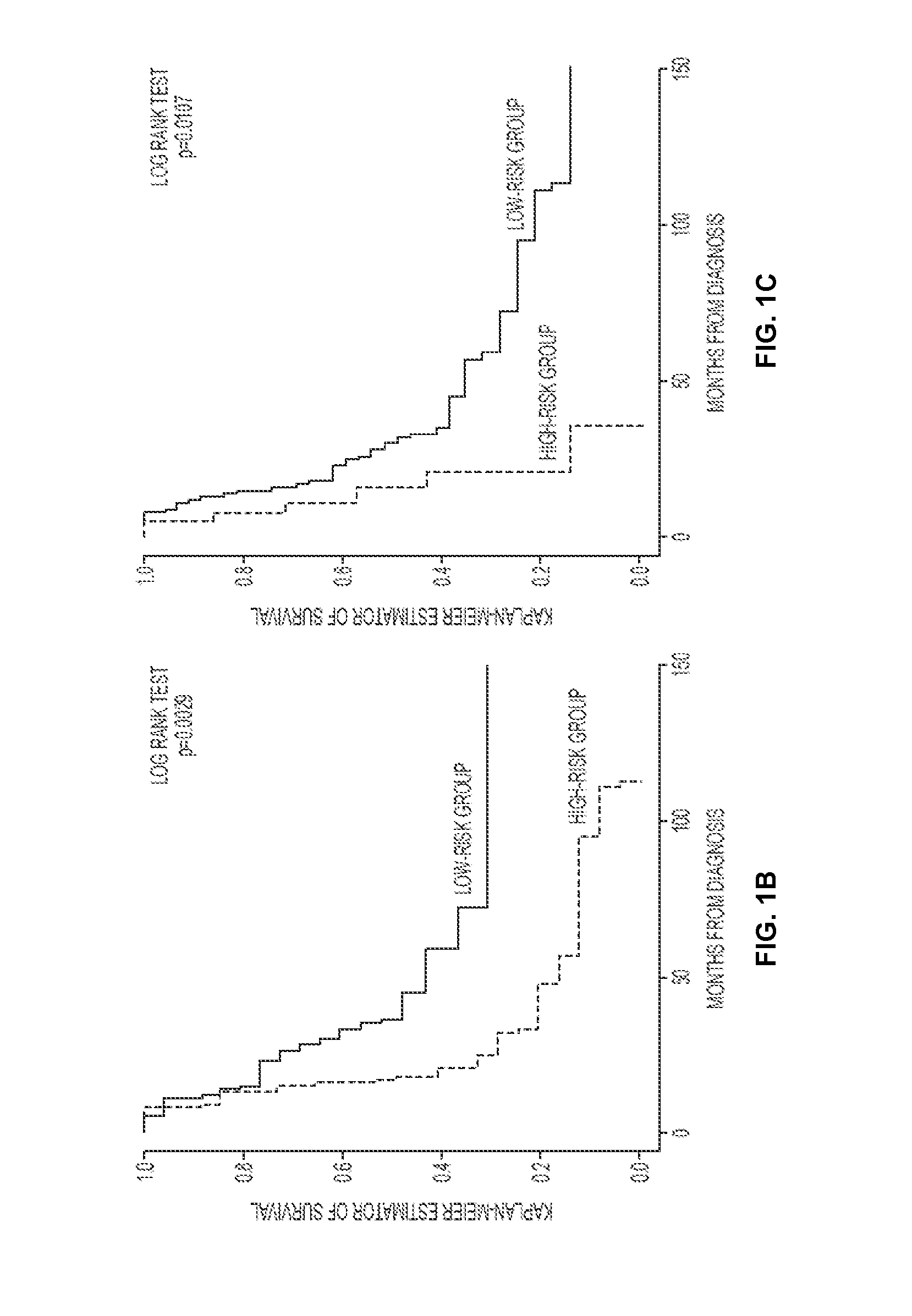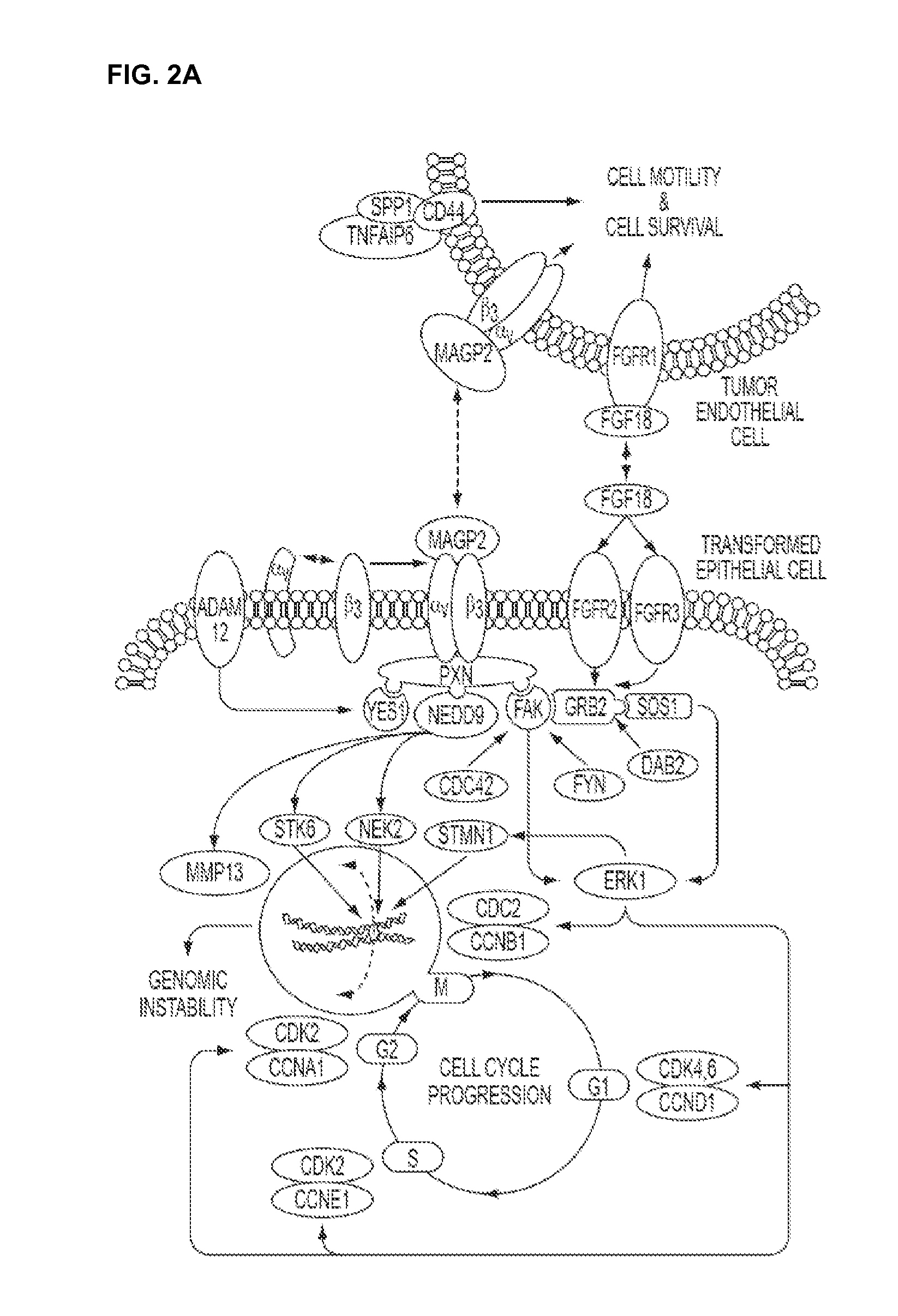Gene expression profile for predicting ovarian cancer patient survival
a gene expression and patient technology, applied in the field of ovarian cancer, can solve the problems of lack of prognostic tools for clinicians and few alternative treatment regimens beyond, and achieve the effect of reducing biological activity
- Summary
- Abstract
- Description
- Claims
- Application Information
AI Technical Summary
Benefits of technology
Problems solved by technology
Method used
Image
Examples
example 1
Gene Signature Predictive for Survival in Subjects with Advanced Papillary Serous Ovarian Cancer
[0270]This example provides a gene signature predictive for survival in subjects with advanced papillary serous ovarian cancer.
[0271]Tissue Samples. Tissue specimens were obtained from sixty previously untreated ovarian cancer patients, who were hospitalized at the Brigham and Women's hospital between 1990 and 2000. All patients had stages III, grade III serous type of ovarian cancer as determined according to the International Federation of Gynecology and Obstetrics (FIGO) standards.
[0272]Microdissection and total RNA extraction. Frozen sections (7 μm) were affixed to FRAME Slides (Leica, Germany), fixed in 70% alcohol for 30 seconds, stained by 1% methylgreen, washed in water and air-dried. Microdissection was performed using a MD LMD laser microdissecting microscope (Leica, Germany). Epithelial tumor cells were selectively procured by activation of the laser. Approximately 5,000 tumor ...
example 2
Identification of Signaling Events Affecting Subject Survival
[0284]This example illustrates putative signaling events that contribute to subject survival.
[0285]To identify co-regulated pathways contributing to patient survival, PathwayStudio Version 4.0 software (Ariadne Genomics, Rockville, Md.) was used. This software package contains over 1 million documented protein interactions acquired from PubMed using the natural language processing algorithm MEDSCAN. The proprietary database can be used to develop a biological association network (BAN) to identify putative signaling pathways. By overlaying expression data over the BAN as well as survival associated gene identities, co-regulated genes defining specific signaling pathways were identified.
[0286]To ascertain whether subsets of the survival associated genes participate in coordinated signaling pathway(s) contributing to patient outcome, the 53 advanced ovarian tumor specimens were compared to 10 normal ovarian surface epithelium...
example 3
Characterization of Clinical Correlates Associated with the Survival Signature Gene MAGP2
[0290]This example characterizes clinical correlates associated with the survival signature gene MAGP2.
[0291]While the probe sets identified in the analysis predicts patient survival as a group, each gene was selected according to its individual Cox hazard ratio. Thus, genes possessing a high hazard ratio may independently predict for patient survival. MAGP2 was identified by 3 separate probe sets and scored the highest hazard ratio. In addition, pathway analysis indicated it might participate in co-regulated signaling events contributing to enhanced tumor cell survival and prolonged endothelial cell survival and motility. The combination of a clear clinical correlation with putative biological consequences in two cell types distinguished MAGP2 as a candidate for further characterization.
[0292]MAGP2 was evaluated as an independent prognostic factor. Tumor cells from 42 late stage, high grade ser...
PUM
| Property | Measurement | Unit |
|---|---|---|
| survival time | aaaaa | aaaaa |
| concentrations | aaaaa | aaaaa |
| concentrations | aaaaa | aaaaa |
Abstract
Description
Claims
Application Information
 Login to View More
Login to View More - R&D
- Intellectual Property
- Life Sciences
- Materials
- Tech Scout
- Unparalleled Data Quality
- Higher Quality Content
- 60% Fewer Hallucinations
Browse by: Latest US Patents, China's latest patents, Technical Efficacy Thesaurus, Application Domain, Technology Topic, Popular Technical Reports.
© 2025 PatSnap. All rights reserved.Legal|Privacy policy|Modern Slavery Act Transparency Statement|Sitemap|About US| Contact US: help@patsnap.com



